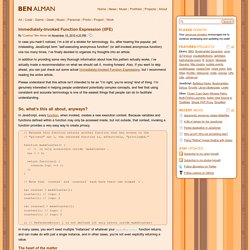

The Complete Guide to JavaScript Classes. JavaScript uses prototypal inheritance: every object inherits properties and methods from its prototype object.

The traditional class as the blueprint to create objects, used in languages like Java or Swift, does not exist in JavaScript. The prototypal inheritance deals only with objects. The prototypal inheritance can emulate the classic class inheritance. To bring the traditional classes to JavaScript, ES2015 standard introduces the class syntax: a syntactic sugar over the prototypal inheritance. This post familiarizes you with JavaScript classes: how to define a class, initialize the instance, define fields and methods, understand the private and public fields, grasp the static fields and methods. 1. The special keyword class defines a class in JavaScript: The code above defines a class User.
You’re not obligated to indicate the class name. Const UserClass = class { }; You can easily export a class as part of an ES2015 module. Export default class User { } And a named export: 2. 3. Comprendre les classes en JavaScript. Introduction JavaScript est un langage basé sur des prototypes, et chaque objet en JavaScript possède une propriété interne cachée appelée [[Prototype]] qui peut être utilisée pour étendre les propriétés et les méthodes des objets.

Vous pouvez en savoir plus sur les prototypes dans notre tutoriel Comprendre les prototypes et l'héritage en JavaScript. Jusqu'à récemment, les développeurs industriels utilisaient des fonctions de constructeur pour imiter un modèle de conception orienté objet en JavaScript. La spécification de langage ECMAScript 2015, souvent appelée ES6, a introduit des classes dans le langage JavaScript. Les classes en JavaScript n'offrent pas réellement de fonctionnalités supplémentaires, et sont souvent décrites comme fournissant du « sucre syntaxique » par rapport aux prototypes et à l'héritage, en ce sens qu'elles offrent une syntaxe plus propre et plus élégante. Function Declarations vs. Function Expressions – JavaScript, JavaScript…
Lets start with a short quiz.

What is alerted in each case? JavaScript Functions Essential Knowledge - Level Up Coding. This article will discuss the essential JavaScript function knowledge that every frontend or Node engineer should know.

Function ExpressionFunction HoistingArrow FunctionMethod DefinitionDefault ParametersRest Parameterarguments ObjectSetter and GetterGenerator Function A JavaScript function is a block of code designed to perform a particular task, and it will be executed when something calls it using parentheses (). By default, functions return undefined. To return any other value, the function must have a return statement that specifies the value to return. Function Declarations vs. Function Expressions – JavaScript, JavaScript… ES3, Chap 5. — Les fonctions en JavaScript. Ce billet fait partie de la collection ES3 dans le détail et en constitue le Chapitre 5.

Dans cet article nous allons parler de l'un des objets principal en JavaScript – les fonctions. Introduction Nous allons nous intéresser à différents types de fonctions, et définir comment chacun de ces types influence l'objet des variables d'un contexte et ce qu'il y a à l'intérieur de chaque chaîne des portées de chaque fonction. Nous répondrons à la question fréquemment posée qui est : « qu'elle est la différence entre une fonction créée comme cela : ECMA-262-3 in detail. Chapter 5. Functions. – .ds laboratory. Read this article in: Russian, Chinese (version 1, version 2), French.

In this article we will talk about one of the general ECMAScript objects — about functions. In particular, we will go through various types of functions, will define how each type influences variables object of a context and what is contained in the scope chain of each function. We will answer the frequently asked questions such as: “is there any difference (and if there are, what are they?) Between functions created as follows: from functions defined in a “habitual” way?” Or, “why in the next call, the function has to be surrounded with parentheses?” Since these articles relay on earlier chapters, for full understanding of this part it is desirable to read Chatper 2. But let us give one after another. In ECMAScript there are three function types and each of them has its own features.
The main feature of this type of functions is that only they influence variable object (they are stored in the VO of the context). Immediately-Invoked Function Expression (IIFE) In case you hadn’t noticed, I’m a bit of a stickler for terminology.

So, after hearing the popular, yet misleading, JavaScript term “self-executing anonymous function” (or self-invoked anonymous function) one too many times, I’ve finally decided to organize my thoughts into an article. In addition to providing some very thorough information about how this pattern actually works, I’ve actually made a recommendation on what we should call it, moving forward. Also, If you want to skip ahead, you can just check out some actual Immediately-Invoked Function Expressions, but I recommend reading the entire article. Please understand that this article isn’t intended to be an “I’m right, you’re wrong” kind of thing. I’m genuinely interested in helping people understand potentially complex concepts, and feel that using consistent and accurate terminology is one of the easiest things that people can do to facilitate understanding.
So, what’s this all about, anyways? The heart of the matter. Read JavaScript Allongé, the "Six" Edition.